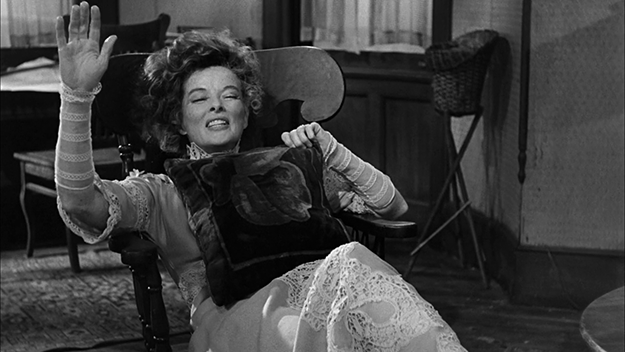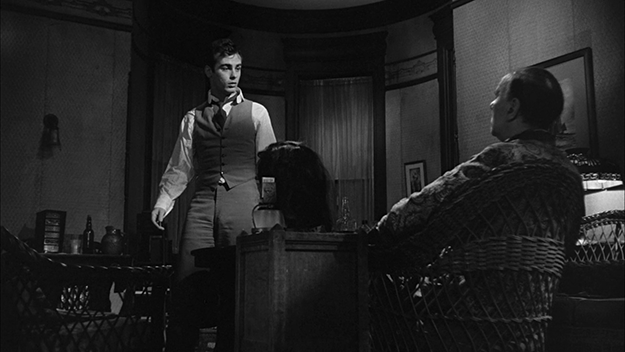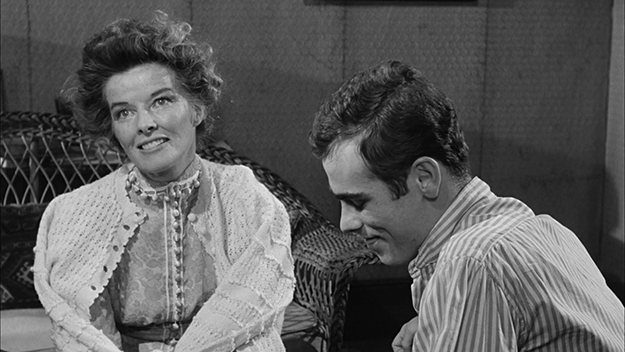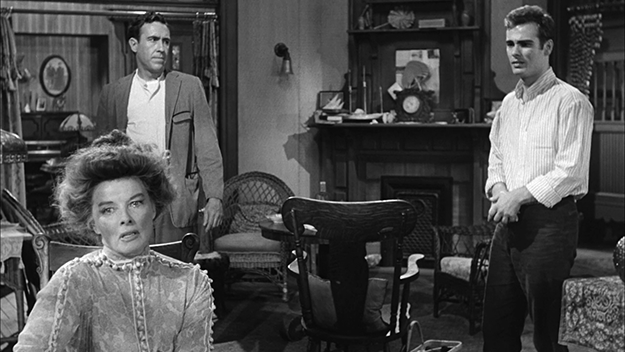TCM Diary: Long Day’s Journey Into Night (1962)
FILM COMMENT and Turner Classic Movies are pleased to announce a new editorial collaboration: “Film Comment Picks.” Each month, the team at FILM COMMENT will publish new essays inspired by films, directors, or actors featured in TCM’s programming.
“There are many reasons for accepting a movie,” Sidney Lumet wrote in his indispensable guidebook-cum-memoir Making Movies. “What’s important is that the material involve me personally on some level. And the levels will vary.” But he hastens to add: “Long Day’s Journey Into Night is everything one can hope for. Four characters come together and leave no area of life unexplored.”
It’s a tribute to Lumet’s drive and stamina—and, frankly, to his courage—that five years into his big-screen career, the most exhaustively confessional work by America’s poet laureate of the shattered soul was everything he could have hoped for. It’s fair to surmise, given that Eugene O’Neill’s family tragedy has never been remade as a feature, that most of Lumet’s colleagues would be daunted by a four-act study of addiction and recrimination that the playwright claimed was written in tears and blood. But for Lumet, then best known for 12 Angry Men—which, like the director’s career, grew out of live TV—this “downward spiral of epic, tragic proportions” was the perfect vehicle for his near-telepathic rapport with actors and instinctive understanding of adaptation.
Published in 1956—posthumously, in keeping with O’Neill’s wishes—Long Day’s Journey charts a single harrowing day in the summer of 1912, as the Tyrone family, modeled closely on the playwright’s own, confront their bitter failings and long-held resentments. Patriarch James (played in Lumet’s 1962 film by Ralph Richardson) is a renowned stage actor who’s never forgotten his squalid Irish childhood. Believing himself one jump ahead of the poorhouse at all times, he has forsaken artistic ambition for commercial success and funneled all his earnings into worthless land, believing there to be security in acreage. His reliance on quack physicians and state-funded hospitals long ago instilled a morphine addiction in his wife Mary (Katharine Hepburn)—lately aggravated by a growing awareness that the “summer cold” of youngest son Edmund (the O’Neill surrogate, played by Dean Stockwell) is in fact tuberculosis. Elder son Jamie (Jason Robards), a stormy alcoholic and failed actor, begrudges the favored Edmund but still tries, with his last glimmer of nobility, to wrest his brother from the family vortex.
The four Tyrones and their Irish maid (a constant reminder of their lower-class origins, never far from James’s thoughts) cloister themselves in a coastal Connecticut home shrouded in fog. The thickening haze as dusk approaches and the unnerving foghorn that pierces the sepulchral night offer apt metaphors for the Tyrones’ retreat into somnolent denial and the wailing ghosts of conscience that won’t let them rest. It can hide the world from you and you from the world, Mary observes of the vapor that signifies her preferred state of mind, and later, adrift in morose rumination: “Why is it that fog makes everything sound so sad and lost, I wonder?”
Always game for recounting her courtship by the once-dashing James Tyrone, Mary is the member of the quartet most entrenched in what the denizens of O’Neill’s The Iceman Cometh would call “pipe dreams,” but at the same time she holds the fewest illusions about the family’s trajectory. Like Jamie, the son she scorns, Mary understands the cycles of justification and mutual enablement that animate the Tyrones like so many interlocking cogs. She torments her helpless men with trips to the drugstore and adjournments to the spare room upstairs, the known site of her morphine stockpile. The catalyst (or excuse, as the case may be) is Edmund’s illness, blamed at various points on James’s tightfistedness, Jamie’s alluringly hedonistic lifestyle, and Edmund’s renunciation of his faith. (Onetime convent girl Mary is so steeped in Catholic guilt she laments that she can no longer call her soul her own.)
“Though [Hepburn] had played great roles,” Lumet wrote, “nothing could compare with Mary Tyrone for psychological complexity, physical and emotional demand, and tragic dimension.” To be sure, her imperious agitation found its perfect match in what may be the most challenging role in American theater. Her quicksilver shifts from coltishly preening her hair and inviting compliments to tugging and scratching at her hands in dope-addled delirium are nearly as startling as her prodigious soliloquies, vanishing into her memories as though possessed of an opiate-powered time machine.
Lumet and cinematographer Boris Kaufman devised numerous visual strategies for segregating Hepburn’s Mary from the male characters, with each technique growing more distinct as the film progresses. In the final act, as the three men trade invective and face truths about themselves, Lumet employs harsher lighting and wider lenses. Conversely, as Mary Tyrone slips into oblivion he softens her light, and uses longer lenses to show her disconnect from reality. The camera which first stood at eye level descends to the floor for the men; for Hepburn it steadily rises until by the end of Act III it’s mounted on a crane. (No wonder Lumet resented critics’ dismissal of the film as a photographed stage play.)
The estimable revival now appearing on Broadway runs almost an hour longer than the film, suggesting that Lumet made judicious cuts to the text, but in fact he kept all but seven pages of the 177-page script. The edits, he explained, were for scenes reliant on close-ups, which he felt would bring them to the point faster than on stage, where everything is realized in long shot, as it were. Indeed Ralph Rosenblum’s editing cleaves to a faster tempo than other, more ponderous productions, which surely accounts for the runtime deficit.
It’s surprising, then, that Lumet’s second 1960s adaptation of a canonical play about a misery-prone theatrical family should feel tepid and sluggish. The Sea Gull (1968) suffers from the central miscasting of Simone Signoret, whose thick French accent obstructs the verbal dexterity needed for Chekhov’s heroine Irina Arkadina—and only the uniformity of the rest of the cast (entirely English) compensates for the strangeness of each character seeming to embody a U.K. stereotype (from Colonel Blimp to the Angry Young Man) while calling each other names like Konstantin Gavrilovich Treplyov. But performances are not the fatal flaw; some, in particular the gangly, tormented David Warner, are excellent.
In Making Movies, Lumet consents to offer a single-sentence (or sentence-fragment) theme for each of his films, declining only Long Day’s Journey in deference to its magnitude. His reading of The Sea Gull— “why is everyone in love with the wrong person?”—is undeniably correct, but in adhering to that question like a didactic doomsayer and using a literal-minded translation by Russian Baroness Moura Budberg, he omits the levity and irony so vital to the play. Adaptations as free as Claude Miller’s La Petite Lili (2003) and the recent off-Broadway deconstruction Stupid Fu**ing Bird embrace the absurdity of life as chronicled by Chekhov, who always regarded The Sea Gull as humorous. So perhaps new definitions are in order: a play that ends with “I fell in love with James Tyrone and was so happy for a time” is a tragedy; a show whose first spoken words are “I am in mourning for my life” couldn’t be anything else but a comedy.
Long Day’s Journey Into Night airs June 1 on Turner Classic Movies.
Steven Mears is a regular contributor to FILM COMMENT and received his MA in film from Columbia University.











